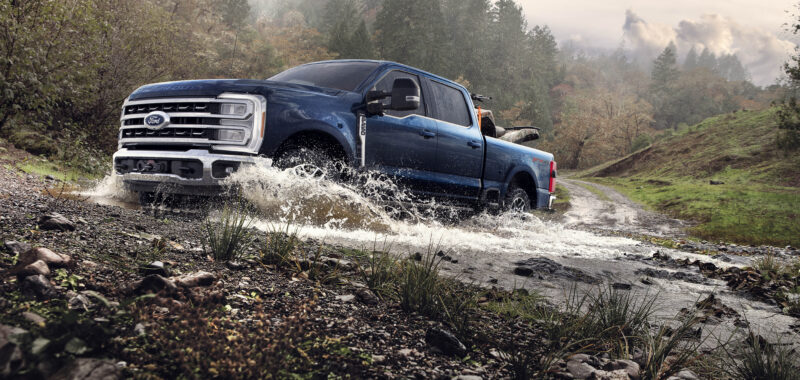For investors hoping Ford’s decisions can reduce EV losses and improve profits elsewhere, there’s good news.
Recently, investors have heard from more and more analysts that it’s time to change the strategy on electric vehicles (EVs). In fact, Bank of America analyst John Murphy went so far as to say Detroit automakers such as Ford Motor Company (F -3.92%) should focus on highly profitable trucks, reduce any footprint in China, and sidestep EVs until they can roll out vehicles around a similar profitability to Tesla. Ouch.
While Ford likely can’t just halt its current EV strategy, we are seeing drastic moves that can hopefully move the needle for its EV losses, which could reach $5.5 billion in 2024. Here’s the latest smart move Ford made.
A major swap
Ford just announced that it plans to expand production of its highly profitable Super Duty pickup line to its plant in Oakville, Ontario. That announcement is much more important than the headlines sound — here’s why.
Originally, the Ontario plant was to have $1.3 billion of capital poured into it to transform it into a producer of two three-row electric crossovers in 2025. Ford scrapped that idea in favor of producing its Super Duty, which it claims it can no longer meet consumer demand for. Management now expects to delay production of the two three-row electric crossovers two years until 2027, although it’s unclear where this will take place.
Why does this matter so much?
“It’s going to be mission critical to ultimately becoming competitive on a price and cost basis with Tesla,” Murphy said, according to The Detroit News. Pushing volume at the moment and losing money doesn’t make a tremendous amount of sense. You really want to focus on some of the next-generation platforms to have a profitable business.
Take a quick glance at Ford’s first-quarter results and you can understand why swapping from more EV production to Super Duty, which is included in Ford Pro’s business division, makes plenty of sense. Consider that during the first quarter, Ford’s EV business unit, Model e, lost a staggering $1.3 billion, while Ford Pro generated a vibrant $3 billion. For additional context, Ford Blue, which is Ford’s traditional gasoline-powered business, generated $900 million.
One reason for Ford Pro’s surging profitability compared to the rest of its business is its staggering margins. Ford Pro’s EBIT margin in the first quarter reached 16.7%, a level mainstream automakers dream of reaching. Ford Pro’s margins dwarf Ford Blue’s 4.2% EBIT margin, which is roughly what mainstream automakers can expect.
Better yet, in Ford’s first-quarter press release, management specifically noted that Ford Pro’s results were driven by higher production of Super Duty trucks, the 2024 North American Truck of the Year. With this recent announcement, investors will see additional production capacity of 100,000 units annually come online, rather than profit-draining EVs.
What it all means
The future of the automotive industry is almost certainly EVs, but it’s becoming clearer that automakers jumped on the trend a little early and bought into the hype. The industry is going to grow much more slowly than anticipated.
That puts automakers in a tough spot currently, as they can choose to push massive profit-draining incentives or let inventory build on dealership lots. For the folks at the Blue Oval, it’s clear that they’re pumping the brakes on EVs until they can produce vehicles that can roll out of production more profitably.
Ford has already delayed launches and adjusted its strategy to postpone spending on EV projects to the tune of $12 billion. For investors, it’s important to watch these developments over the next 18 months. Ford needs to continue pouring capital into EV development to improve production efficiency and lower costs, but also reduce its emphasis on the segment until it can produce a more affordable and more profitable product.
It will be a huge step if Ford can prove to investors that this year’s projected loss of up to $5.5 billion in its Model e unit will be the peak of losses.
Bank of America is an advertising partner of The Ascent, a Motley Fool company. Daniel Miller has positions in Ford Motor Company. The Motley Fool has positions in and recommends Bank of America and Tesla. The Motley Fool has a disclosure policy.

